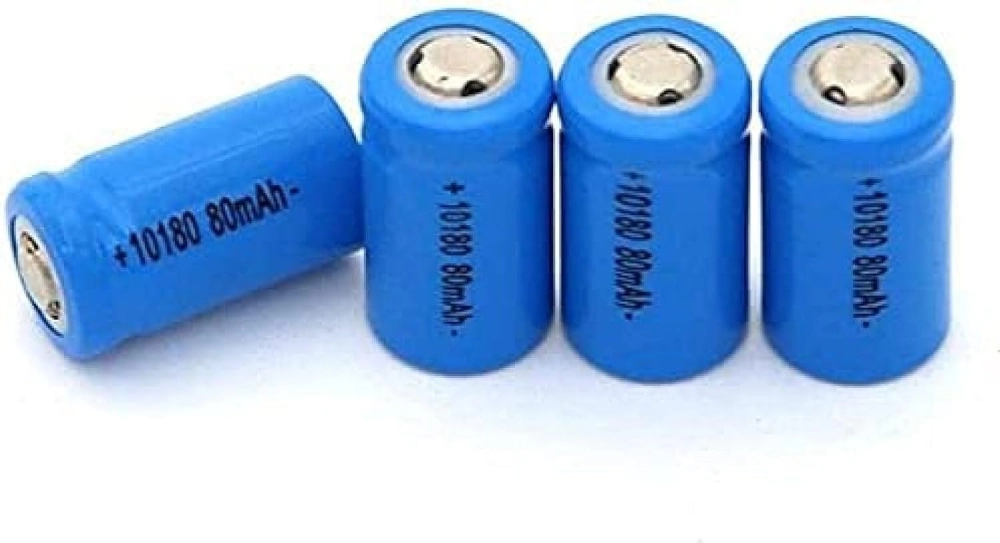Battery technology is crucial in determining the performance, longevity, and overall user experience of portable electronics and mobile devices. Two common battery voltages are 3.7V and 3.8V. While they may seem similar, key differences can affect device performance and battery life. This comprehensive guide explores the distinctions between 3.7V and 3.8V batteries, their applications, and what these differences mean for consumers and manufacturers.
Part 1. Understanding Battery Voltage Basics
Before delving into the specifics of 3.7V and 3.8V batteries, it’s important to understand what battery voltage is and how it affects device performance.
What is Battery Voltage?
Battery voltage refers to the electrical potential difference between the positive and negative terminals of a battery. It determines the force that drives current through a circuit. Essentially, voltage dictates how much power a battery can supply to a device.
Nominal vs. Actual Voltage
Voltage ratings, such as 3.7V and 3.8V, are referred to as nominal voltages. However, the actual voltage of a lithium-ion battery varies based on its state of charge:
- A fully charged 3.7V battery can reach 4.2V.
- A fully discharged 3.7V battery might drop to around 3.0V.
- The nominal voltage represents the average or typical voltage during normal use.
Part 2. 3.7V Lithium-Ion Batteries
3.7V lithium-ion batteries have been a mainstay in portable electronics for many years. Let’s examine their characteristics and applications.
Key Characteristics of 3.7V Batteries
- Nominal Voltage: 3.7V
- Full Charge Voltage: Typically 4.2V
- Cut-off Voltage: Usually around 3.0V
- Common Chemistry: Lithium Cobalt Oxide (LiCoO2) or Lithium Manganese Oxide (LiMn2O4)
Applications of 3.7V Batteries
3.7V lithium-ion batteries are widely used in various consumer electronics, including:
- Smartphones
- Tablets
- Digital cameras
- Portable speakers
- E-cigarettes
- Power banks
Advantages of 3.7V Batteries
- Wide Availability: Due to the long-standing presence of 3.7V batteries in the market, they are readily available and compatible with many devices.
- Mature Technology: Manufacturers and consumers are familiar with the performance and reliability of 3.7V batteries.
- Cost-Effective: Mature production techniques make these batteries affordable.
Part 3. 3.8V Lithium-Ion Batteries
3.8V lithium-ion batteries are a more recent development, offering several advantages over 3.7V batteries.
Key Characteristics of 3.8V Batteries
- Nominal Voltage: 3.8V
- Full Charge Voltage: Typically 4.35V, and in some cases, even 4.4V
- Cut-off Voltage: Usually around 3.0V
- Common Chemistry: Advanced cathode materials or additives are used to enable higher voltage.
Applications of 3.8V Batteries
3.8V batteries are increasingly being used in:
- High-end smartphones
- Tablets with demanding power requirements
- Battery modules in electric vehicles
- Drones and other high-performance portable devices
Advantages of 3.8V Batteries
- Higher Energy Density: The slightly increased voltage allows more energy to be stored in the same physical space.
- Enhanced Device Performance: The higher voltage can provide more power, which improves overall device efficiency.
- Longer Run Time: In some cases, the increased energy density translates to longer battery life.
Part 4. Key Differences Between 3.7V and 3.8V Batteries
Now that we’ve explored both battery types, let’s compare their differences to understand how they affect performance and usability.
1. Voltage Range
- 3.7V Batteries: Charges up to 4.2V and discharges down to 3.0V.
- 3.8V Batteries: Charges up to 4.35V or 4.4V and discharges down to 3.0V.
Due to its higher charging voltage, the 3.8V battery can store more energy, leading to improved efficiency and performance.
2. Energy Density
3.8V batteries typically offer a higher energy density compared to 3.7V batteries due to the higher nominal and charging voltages. This means they can store more energy in the same physical size, which is advantageous for compact and high-performance devices.
3. Device Compatibility
While 3.8V batteries offer advantages in energy density and performance, they may not be directly compatible with devices designed for 3.7V batteries. It’s essential to ensure a device’s battery management system can handle the higher voltage to avoid potential issues.
4. Charging Requirements
3.8V batteries require chargers capable of accommodating their higher charging voltage, typically up to 4.35V or 4.4V. Using an incompatible charger may result in incomplete charging or potential safety hazards. Therefore, it’s crucial to use chargers specifically designed for 3.8V batteries.
Conclusion
Understanding the differences between 3.7V and 3.8V lithium-ion batteries is crucial for making informed decisions regarding device compatibility, performance, and safety. While 3.7V batteries have been widely used and offer proven reliability, 3.8V batteries offer advantages in energy density and performance, making them suitable for high-end and demanding applications. However, when choosing between the two, it is important to consider the specific requirements of your device and application.
1. Increased Stress on Battery Cell
Using a battery with a higher voltage can put more stress on the battery cells, potentially affecting their lifespan and stability.
2. Energy Density
3.8V batteries typically offer higher energy density than 3.7V batteries. This allows them to store more energy in the same volume, resulting in longer device runtimes or a more compact battery design for the same capacity.
3. Device Compatibility
While many devices designed for 3.7V batteries may be able to use 3.8V batteries, compatibility is not guaranteed. Some devices have voltage regulators or components specifically calibrated for 3.7V, and using a 3.8V battery could lead to the performance issues.
4. Charging Requirements
3.8V batteries require chargers providing a higher voltage, typically 4.35V or 4.4V, whereas 3.7V batteries usually use 4.2V chargers.
5. Battery Lifespan
Due to the higher charging voltage, 3.8V batteries typically have a shorter lifespan compared to 3.7V batteries.
The increased stress during charging and discharging can accelerate capacity degradation.
6. Safety Considerations: 3.7V vs. 3.8V Batteries
Overcharge Risk
- 3.7V Batteries: Typically have well-established safety mechanisms to prevent overcharging beyond 4.2V.
- 3.8V Batteries: Require more advanced protection circuits to safely handle the higher charging voltages of 4.35V or 4.4V.
Thermal Management
Higher voltage batteries, such as 3.8V batteries, may generate more heat during operation, requiring better thermal management in device design.
Protection Circuits
Both battery types include protection circuits to prevent:
- Overcharging
- Over-discharging
- Short circuits
- Overcurrent
However, the specific voltage thresholds for these protections may differ between 3.7V and 3.8V batteries.
7. Practical Performance Comparison: 3.7V vs. 3.8V
Smartphones
- 3.7V Batteries: A long-standing industry standard, compatible with a wide range of charging accessories.
- 3.8V Batteries: Increasingly used in high-end smartphones to extend battery life or to enable slimmer device designs.
Drones
- 3.7V Batteries: Common in smaller, consumer-grade drones.
- 3.8V Batteries: Preferred for high-performance drones due to their higher energy density, potentially allowing for longer flight times.
Electric Vehicles (EVs)
While EV battery packs may contain cells with nominal voltages of 3.7V or 3.8V, the overall design and management system of the battery pack have a far greater impact on EV performance than the individual cell voltage.
8. Choosing Between 3.7V and 3.8V Batteries
When selecting a battery, consider these key factors:
- Device Compatibility: Ensure the device can operate safely with the chosen battery voltage.
- Performance Requirements: Determine if your application needs the benefits of a 3.8V battery, such as higher energy density and longer runtime.
- Charging Infrastructure: Confirm that your existing chargers support the required battery voltage.
- Cost Considerations: Evaluate the price difference and potential long-term savings.
- Device Lifespan: Consider that 3.8V batteries may degrade faster, affecting long-term device use.
- Environmental Impact: Assess the environmental impact of their production and recycling processes.
9. Frequently Asked Questions
Can I use a 3.8V battery in a device designed for 3.7V?
In many cases, yes, but it depends on the voltage regulation capabilities of the device. Always consult the manufacturer’s specifications to avoid any potential risks.
Can a 3.8V Battery Be Used in a 3.7V Device?
In most cases, yes. Devices designed for 3.7V batteries can typically accommodate slightly higher 3.8V batteries. However, it is recommended to check the device specifications or consult the manufacturer to ensure compatibility and prevent potential damage.
Does a 3.8V Battery Last Longer Than a 3.7V Battery?
A 3.8V battery often has a higher energy density, which may result in longer device run time. However, the overall battery life is influenced by various factors, including the device’s power consumption and how it is used.
Is a 3.8V Battery More Expensive Than a 3.7V Battery?
Generally, 3.8V batteries are more expensive than 3.7V batteries because their construction involves more advanced technology and materials. However, the price can vary based on the manufacturer and specific battery model.
Can a 3.8V Battery Be Charged with a Standard 3.7V Charger?
It is not recommended to charge a 3.8V battery with a standard 3.7V charger. A 3.8V battery typically requires a higher charging voltage (around 4.35V or 4.4V for lithium-ion batteries) than what a 3.7V charger usually provides (typically 4.2V). Using the wrong charger can lead to safety risks, including undercharging, and potentially damage the battery.
Which Battery Type Is Better for the Environment: 3.7V or 3.8V?
The environmental impact of 3.7V and 3.8V batteries is quite similar, as both are lithium-ion batteries that require proper recycling. While slight differences in chemical composition and manufacturing processes may have some environmental impact, the environmental impact primarily depends on production methods and recycling practices, rather than the specific voltage.









